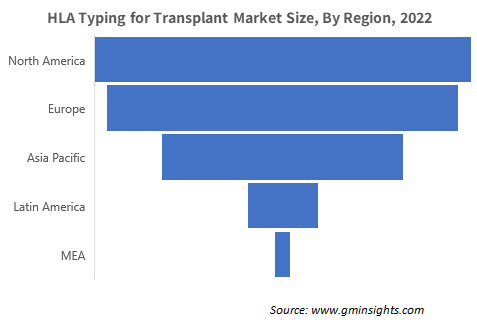Home > Healthcare > Medical Devices > Diagnostic Devices > HLA Typing for Transplant Market
HLA Typing for Transplant Market Analysis
- Report ID: GMI1653
- Published Date: Nov 2022
- Report Format: PDF
HLA Typing for Transplant Market Analysis
HLA typing for transplant market from molecular assays technology is anticipated to exceed USD 1.5 billion by 2032. Hospitals, laboratories, and medical centers are rapidly shifting toward molecular assay technology for next-generation sequencing (NGS) in tissue typing. It offers end-users high-throughput, efficient, and DNA sequencers in HLA testing. The growing use of technologies such as NGS, PCR, and RT-PCR in healthcare will further proliferate the use of molecular assay techniques.
In terms of revenue share, the software segment of the HLA typing for transplant market is estimated to reach USD 250 million by 2032. Software assistance in HLA typing is gaining momentum as the process is time-consuming. Technological advancements have enabled the development of sophisticated software to analyze and compile data through HLA typing. Several industry players are introducing novel software to enhance the efficiency of organ transplant procedures.
HLA typing for transplant market from diagnostic labs is projected to surpass USD 943 million by 2032. Over the last few years, the number of HLA testing procedures performed at diagnostic laboratories has increased substantially on account of the increasing frequency of organ transplants. According to the Global Observatory on Donation & Transplantation, approximately 129,681 organ transplant surgeries were performed in 2020. The rising prevalence of genetic conditions, chronic disorders, and physical injuries will fuel the need for HLA typing at diagnostic labs.

North America HLA typing for transplant market was more than 35% in 2022. Developed countries like the U.S and Canada with robust healthcare infrastructure and expenditure will positively influence the regional industry landscape. Several government initiatives have been implemented to ensure the ethical execution of organ donation processes along with transplantation programs. These countries have also reported considerable growth in the demand for organ transplants in recent years.

